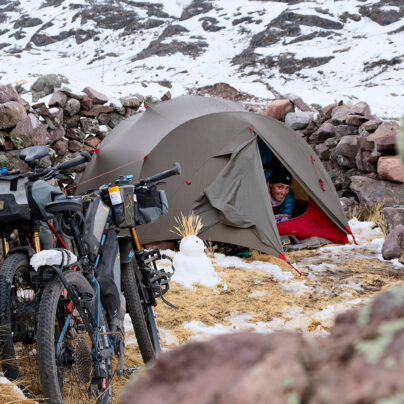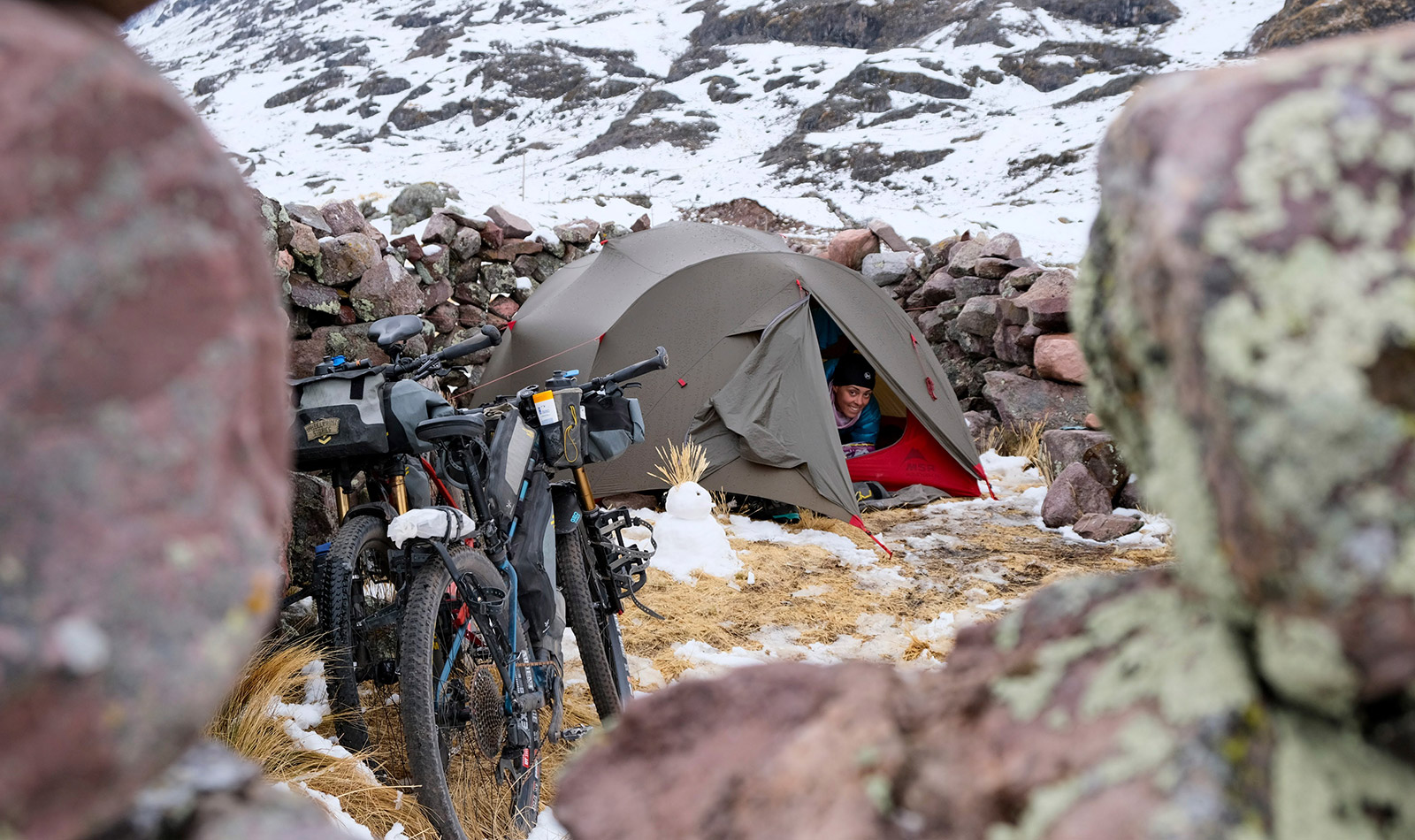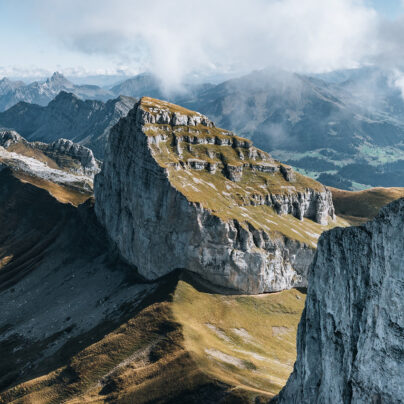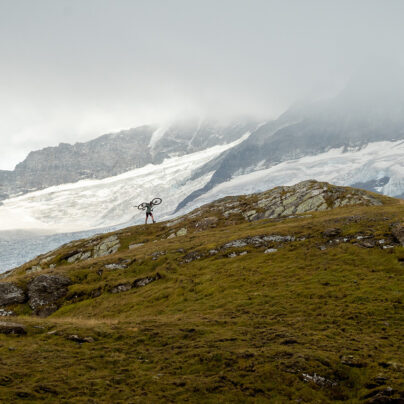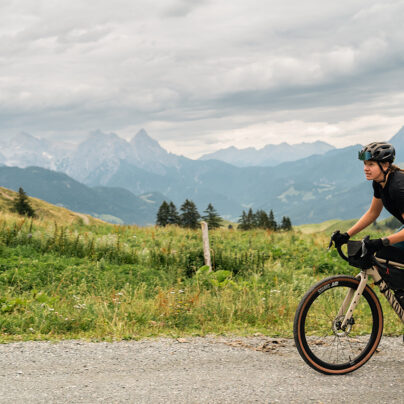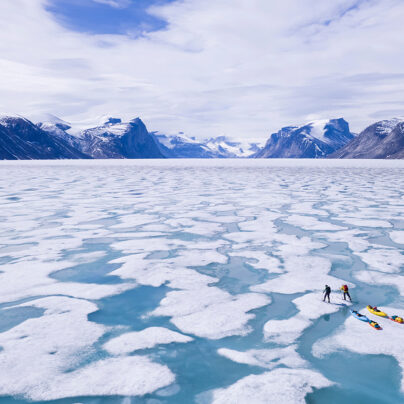Planning the Unpredictable
Bikepacking the Ausangate Sacred Range
Written by Sònia Colomo Sala // Photography by Sònia Colomo Sala & Eloi Miquel Arcarons
Though Eloi and I had already experienced a variety of conditions – from blissful to miserable – since our departure from San Diego, California, eight months earlier, this was the first time I truly worried that we had made a mistake.
Eloi and I left Catalunya after quitting our jobs, him as a mechanical engineer and me as a paediatric physiotherapist. We sold everything but our bikes and bikepacking gear. Our goal for a year and a half’s travelling would be to experience the best mountain bike routes in the world. One ride filled us with anticipation: Peru’s Ausangate Loop, with its remote high-altitude roads, views of the iconic Rainbow Mountain, and the sacred mountain Nevado Ausangate towering at 6,384m nearby.
We had ridden through Mexico, completing the Baja Divide and crossing the Baja California Peninsula. Then we continued south through mainland Mexico and into Guatemala. Blazing heat alternated with freezing nights, leading to days of constant rain that followed us through Ecuador. But none of those difficult days would be as trying as our Ausangate Loop experience.
We craved an off-road mountain bike route at altitude. Although we had ridden some mountain-bike sections earlier in the trip, nothing had been super technical or anything like we are used to in terms of mountain biking. But the three-day Ausangate Loop has a reputation. People say it is one of the best mountain-bike routes in Peru – we were stoked. In addition to the regular route, we wanted to add in a trip to see the Rainbow Mountain, which looked doable on a map. Although information about riding there was almost impossible to find.
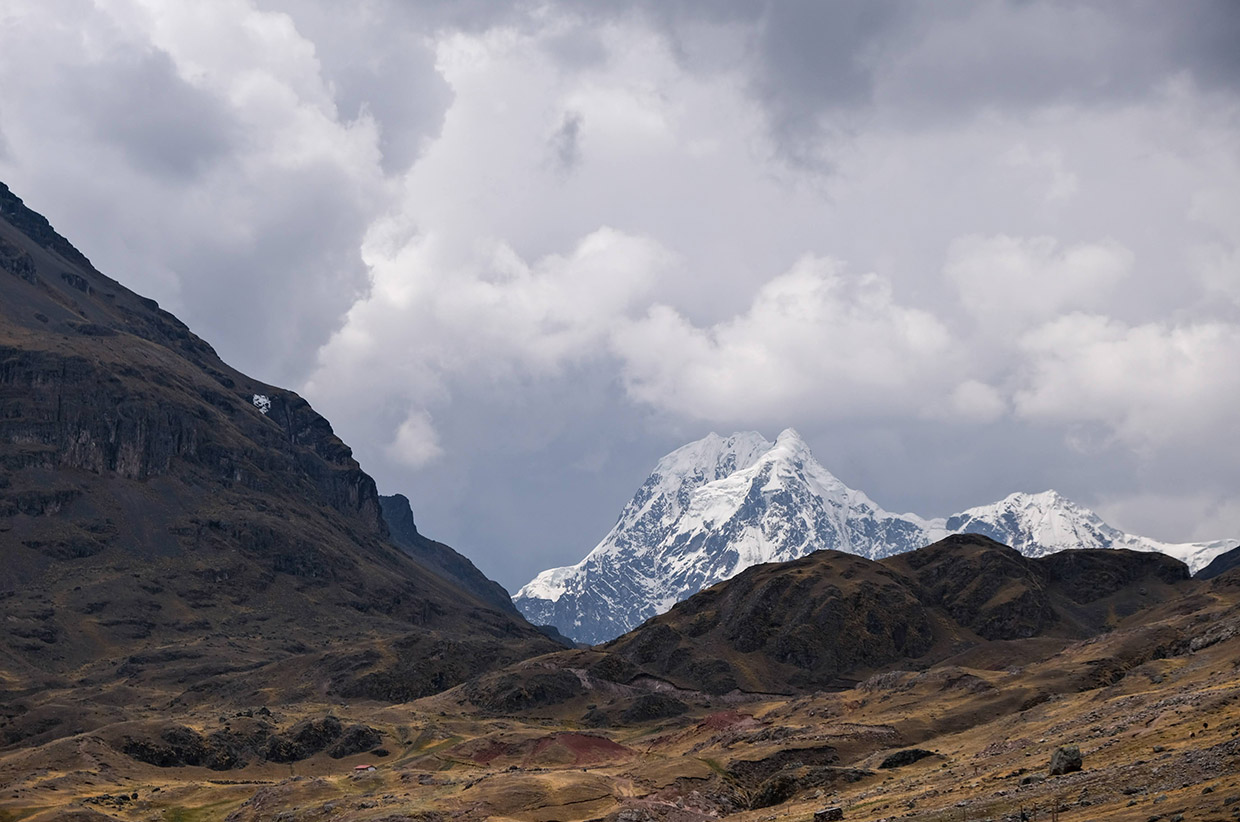
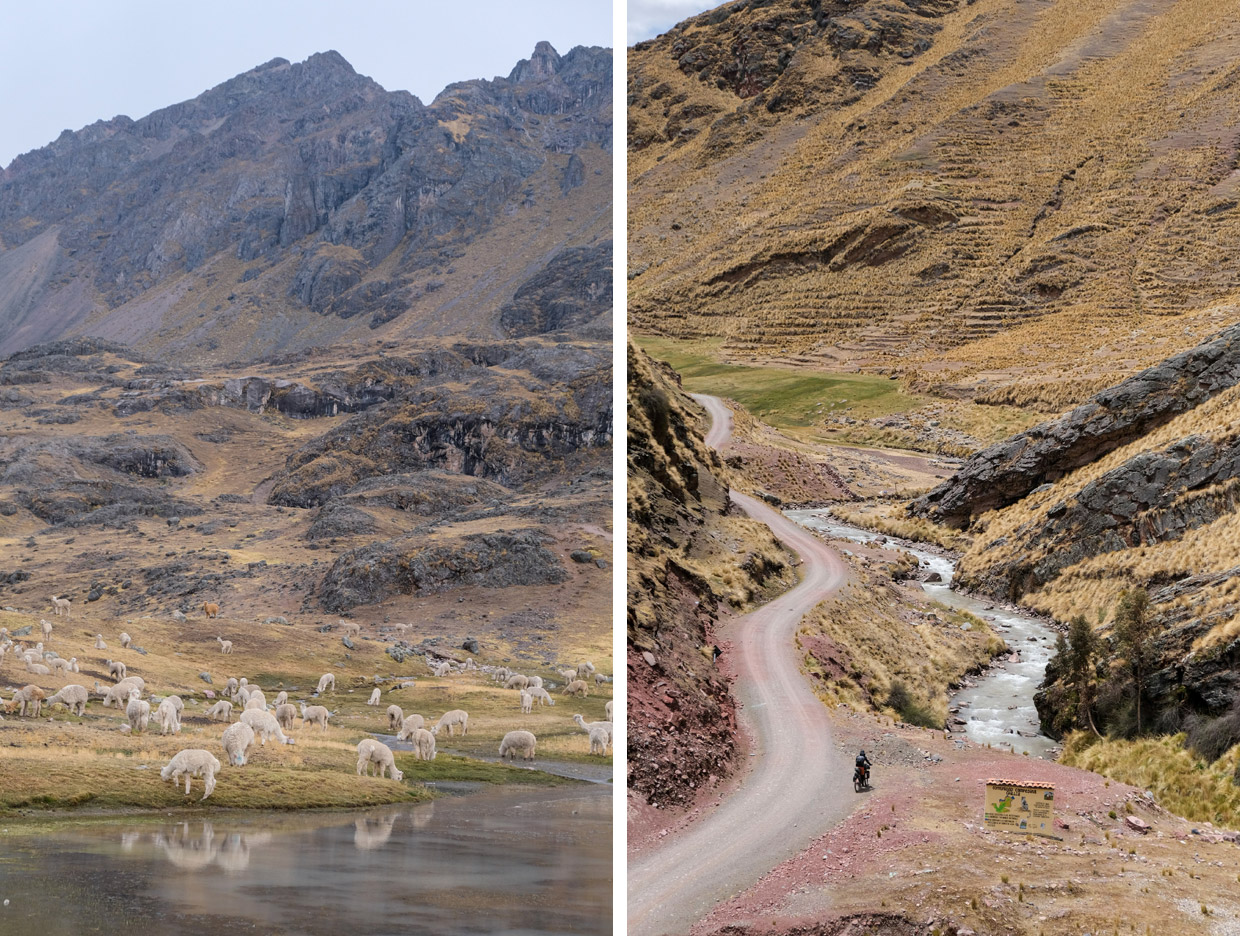
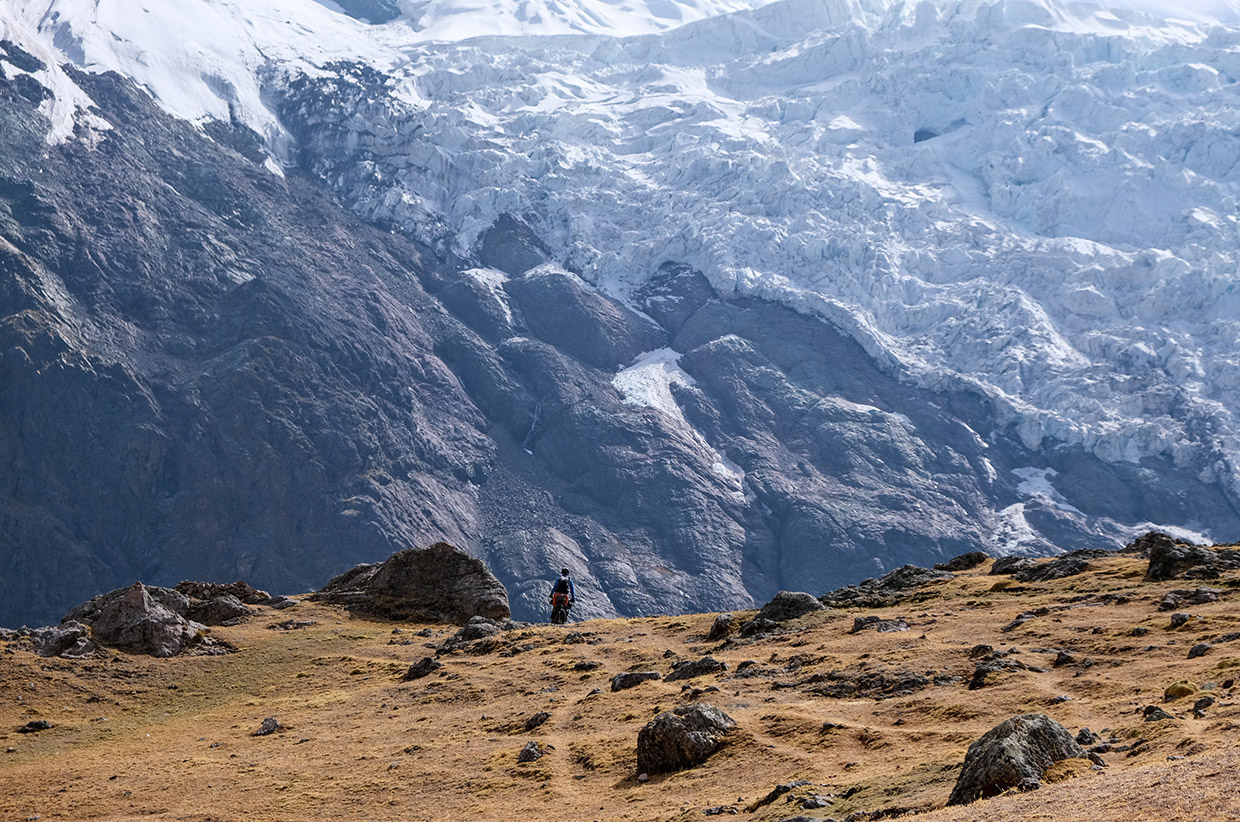
Until this portion of our ride we hadn’t done much planning. We didn’t set a specific distance to ride each day, and we would stop when we found a pleasant place to camp or stay longer at a nice place to swim. Weather often made us stop short of the distance we knew we could pedal. In Ecuador, we had the worst experience of our lives – or so we thought at the time – when a rainstorm caught us at 4,200m. We spent six hours fighting the wind, the rain, the cold, and the landslides – torrents of water pouring from the mountains. ‘We are going to die!’ was all I could scream. Eloi, in front, said: ‘Just ride or we will definitely die!’
But for the Ausangate Loop we made more specific plans. We studied the route extensively. And, after bad experiences in Ecuador and Peru, we wanted to make sure that the weather would be on our side. Obsessively, we checked the forecast: sun every day and 10 per cent probability of rain one of the nights. When we asked the locals about the weather we were told ‘No llueve ahora, no es tiempo de lluvia, solo sol.’ Only sun, no rain at this time of year. We even planned our camping spots ahead – it would be cold at high altitude, so we didn’t want to camp at the high points.
Other than the lack of information about the link from the Loop to the Rainbow Mountain, Eloi and I felt prepared. At last it was time to begin the kind of route we had come to South America to enjoy.
***
Being alone (or with Eloi) in remote and beautiful places is heaven for me. In fact, over the course of this trip I think I slowly developed a fear of being near too many people. I feel most at peace in my tent with just the sounds of nature nearby. But when things go wrong there is nothing lonelier than feeling exposed. I mean, when travelling by bike you are always exposed to everything, from weather to animals to other humans, but in the high altitude and vast remoteness of the Ausangate this exposure can be dangerous.
After a first day that started dry, sunny, and warm, the wind picked up – and we spent our first night playing rock-paper-scissors every ten minutes to decide which of us would head outside to knock snow off the tent. Day two began with foot trails, river crossings, and the open pampa. And then it started snowing again. We set up the tent in record time behind some ruins, but after half an hour the sun came out once more.
It was early. We didn’t have much distance left to reach the first pass. If the day stayed clear, we knew we had enough hours of sunshine to get there and go down to the first lagoon at least. So we packed the tent again, then continued pushing and pedalling upwards.
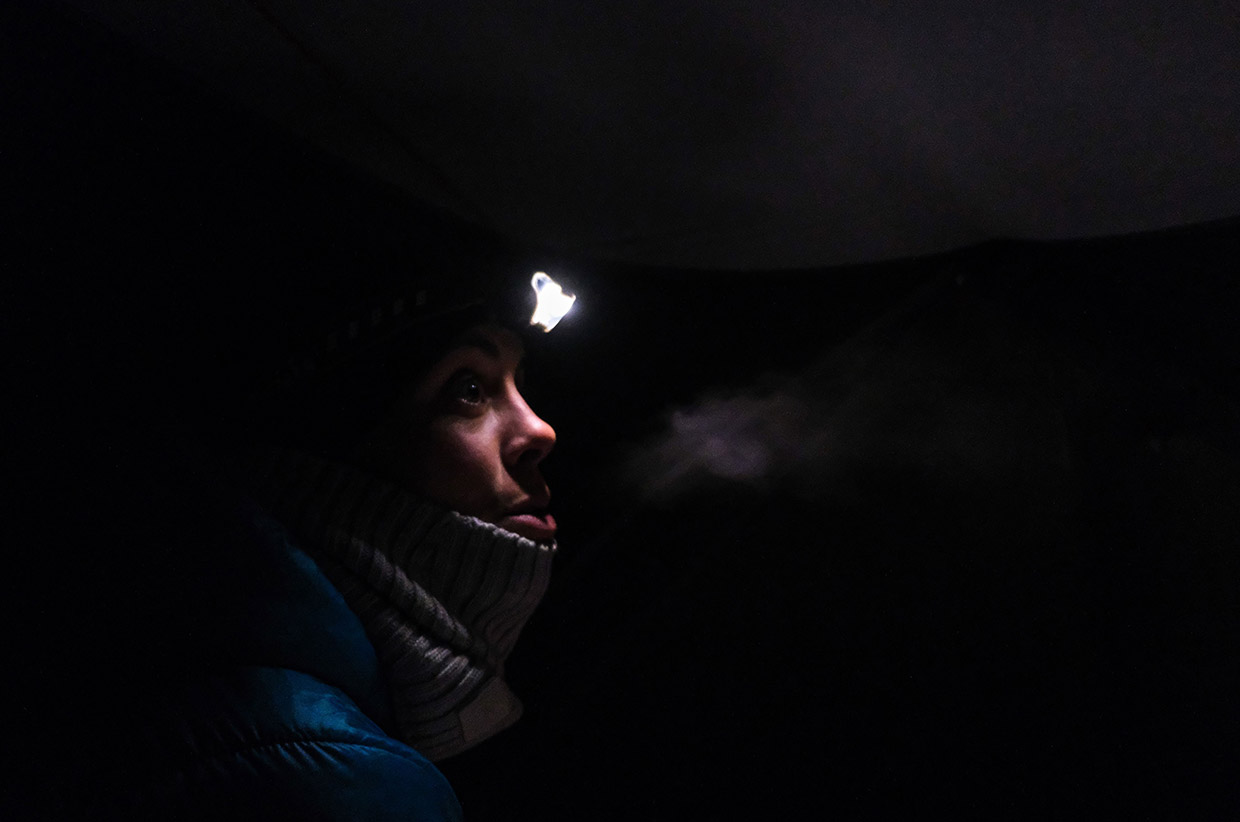
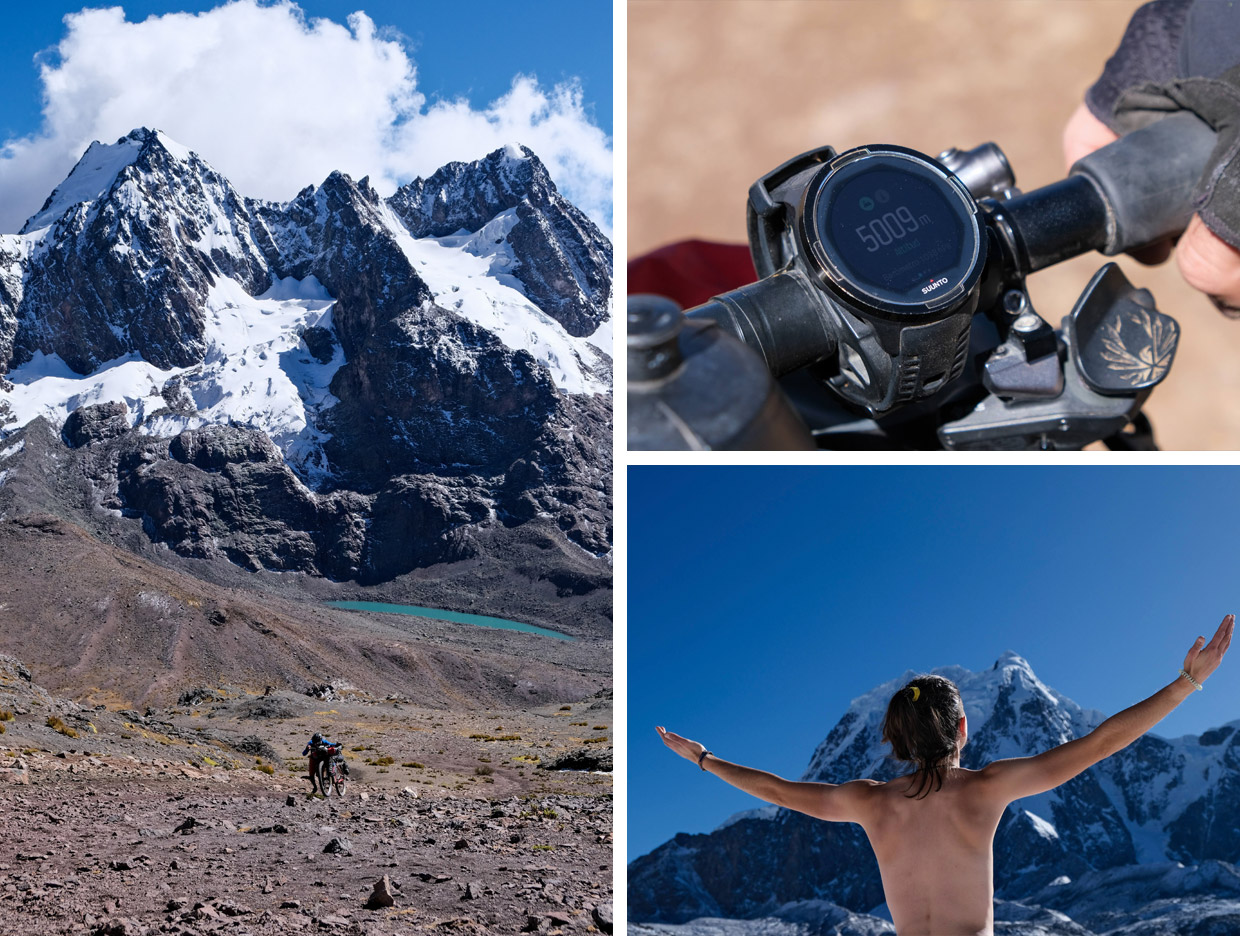
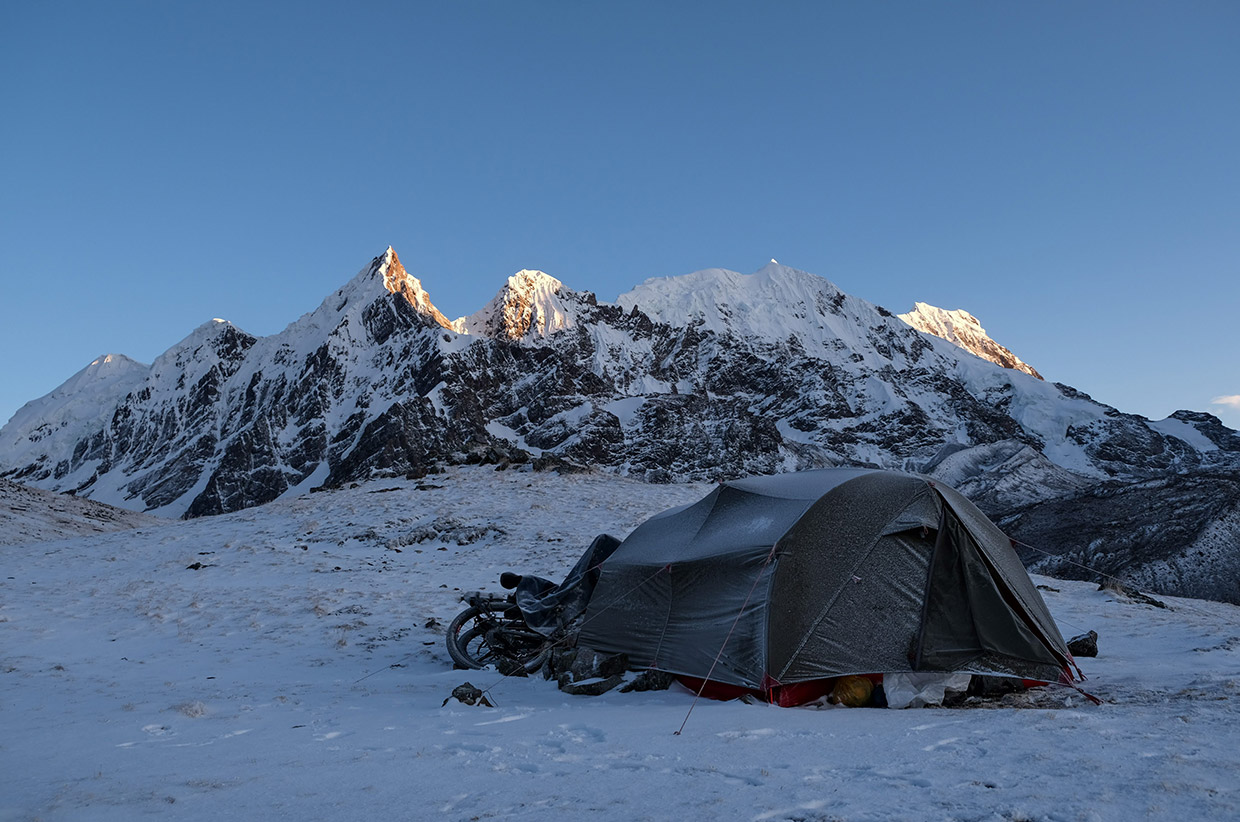
Thunder grumbled somewhere over on the other side of the mountain. As we rounded the last bend, a grim wall of hammered-steel cloud greeted us. Have we got this one wrong? I found myself thinking, suddenly flushed with anxiety and wondering if we should have stayed put. I checked our elevation. 4,900m. Will we have enough time to get the tent up before the sky falls on us?
The first ripples of lightning flickered through the oncoming storm as Eloi and I fought with the tent. Gusts, ever stronger, blasted fat flakes of snow into faces already raw from the wind. We grabbed stones and placed them around the edge of the flysheet to stop snow from getting under it. Then we dived inside and crouched in the sudden twilight, looking at each other, eyes wide and bright. A sense of unreality stole over me.
‘And the bikes?’ I asked Eloi. ‘Will they end up blown away by the wind?’ Even those words, the first we had spoken to each other since this storm had overtaken us, felt surreal.
It was a hard night.
The storm ripped at our shelter. It felt as if the wind would carry the tent away with us in it. We spent hours curled up in our sleeping bags unable to sleep. ‘To all the gods of the mountains,’ Eloi muttered, ‘give us a sunny day tomorrow.’ I prayed for the bikes to be there the next day. Maybe it was the energy of the place. Maybe it was being exhausted. Maybe after all of the other storms and chaos we’d been through I was becoming desensitised, but while the storm was scary, I felt strangely calm. ‘They will find us frozen tomorrow,’ I said while I sipped a precious cup of hot chocolate – we had packed light on supplies. We might fly away and no-one would see us again. It was a weird sensation, as if I were in the right place but in the wrong moment. Eventually I fell asleep.
The Incas believed that mountains are holy living spirits called Apus. The most powerful Apu is the Ausangate, and there we were, caught in a snowstorm at its feet. Who knows if Eloi’s prayers had been heard, but when we put our heads out of the tent door in the morning, and saw that there was not a single cloud in the sky, we screamed cries of joy that echoed in the white immensity surrounding us. ‘Can you believe it?’ I said, and Eloi’s expression shared my awe. We took off our clothes to feel the warmth of the first rays of sun on our skin, already coaxed into goose pimples by the freezing breeze.
***
That day delivered both bright sun and endless high trails – paradise for any mountain biker. To reach them, however, we would have to push the bikes first to the Abra Campa (5,076m) while admiring the peak of Hatun Uma, and later on to the Abra la Arapa (4,850m). Finally, we were able to enjoy a downhill roller coaster that made us feel like kids in the best playground ever. That carefree feeling was fleeting, though; clouds appeared again in the afternoon, accompanied by more wind. We decided to stop and settle down in a corral overlooking the Hatun Pucacocha Lagoon. The wind continued throughout the night, but for once it didn’t rain or snow.
The Ausangate Loop continued, but we were drawn to see the Rainbow Mountain. Although we were close, the trail on the map that goes straight up to the top of the Abra Apachita (4,900m) is a mule track. The south face of the Ausangate Glacier rose up behind us, a jumble of white seracs, as we pushed the bikes and cursed the stones of the trail only used by mules and donkeys and hikers. We were sweating as we crested the pass – and then the technical descent saw us race against yet another storm.
The snowstorm caught us before we reached the shelter of Anantapata. We had no choice but to stop. The goal was to reach the Abra Warmisaya (4,985m) that day, and although the storm subsided for a few hours, it didn’t leave us enough time. A second storm caught us at 4,800m.
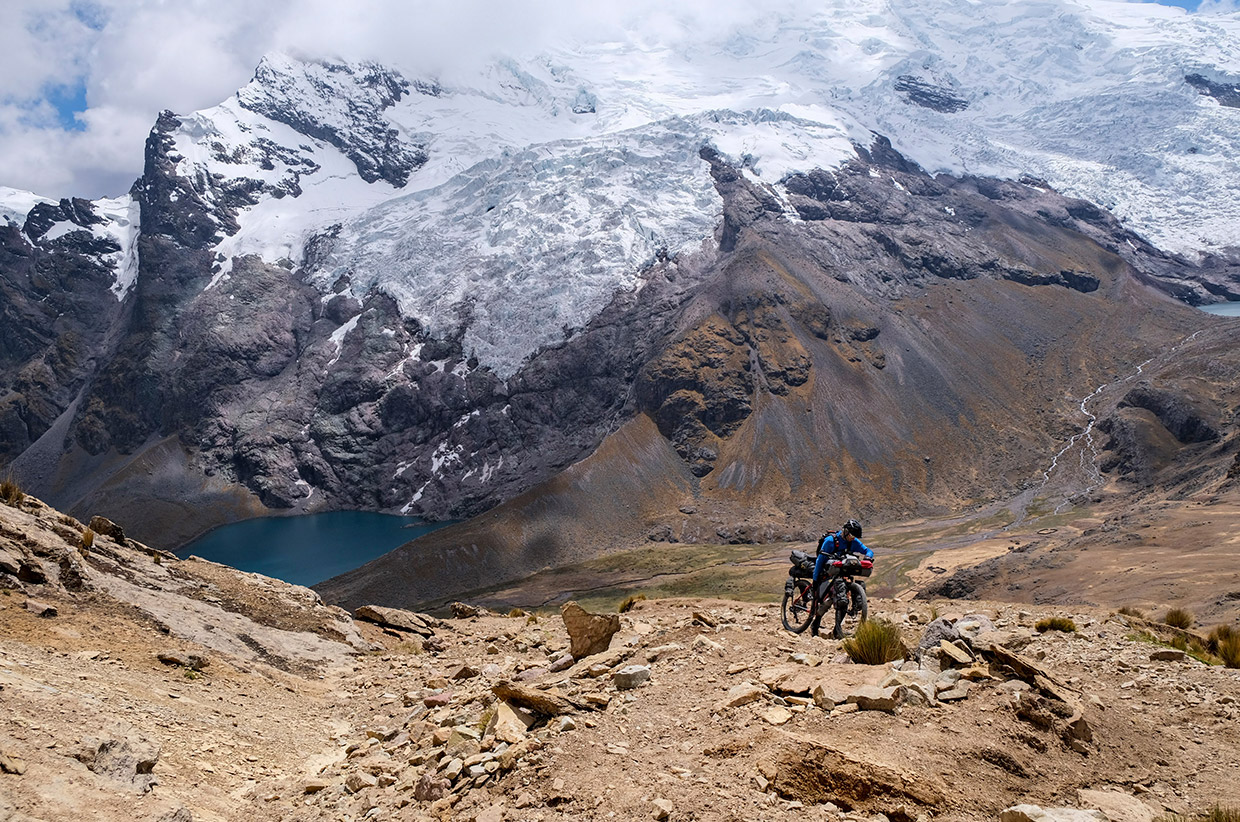
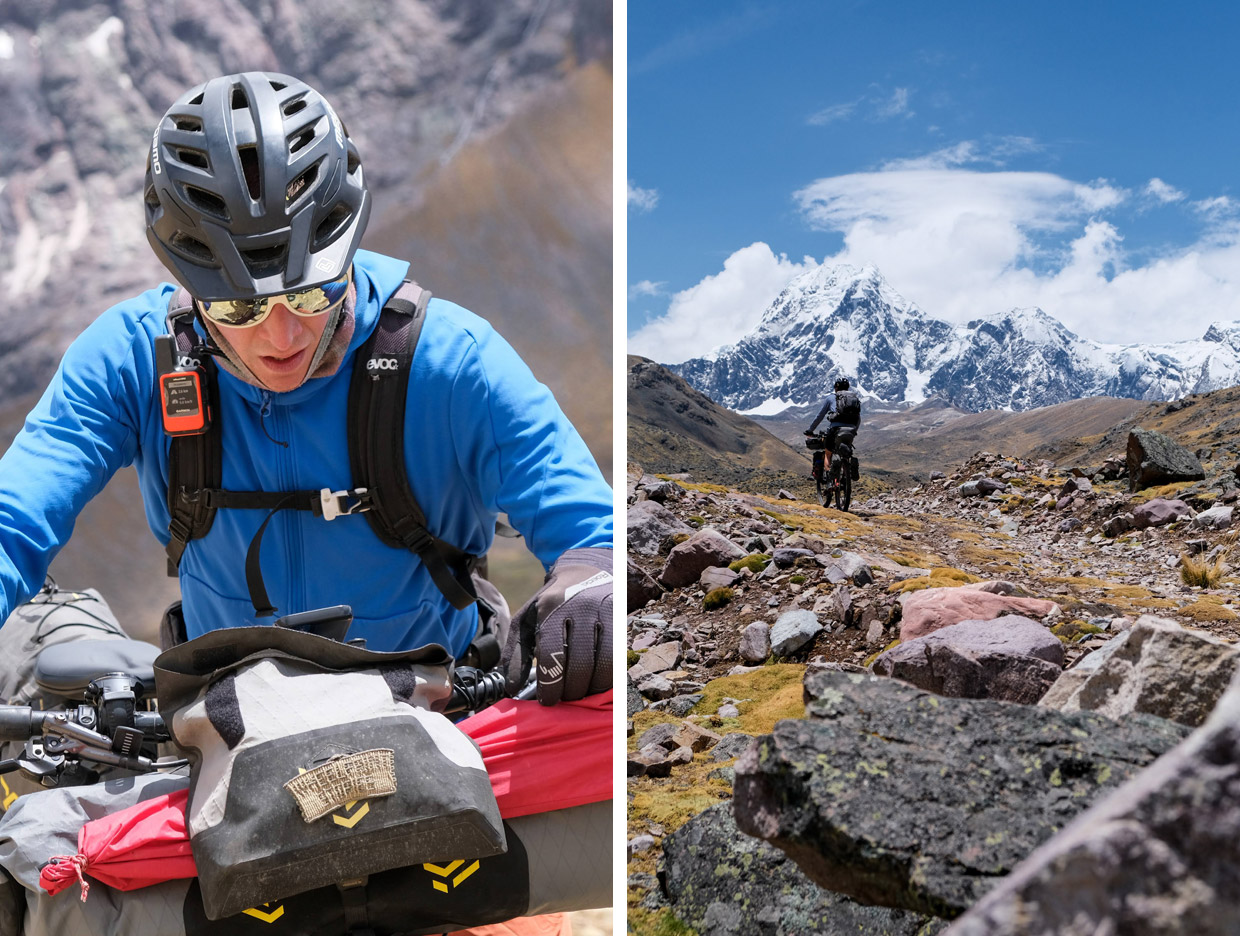
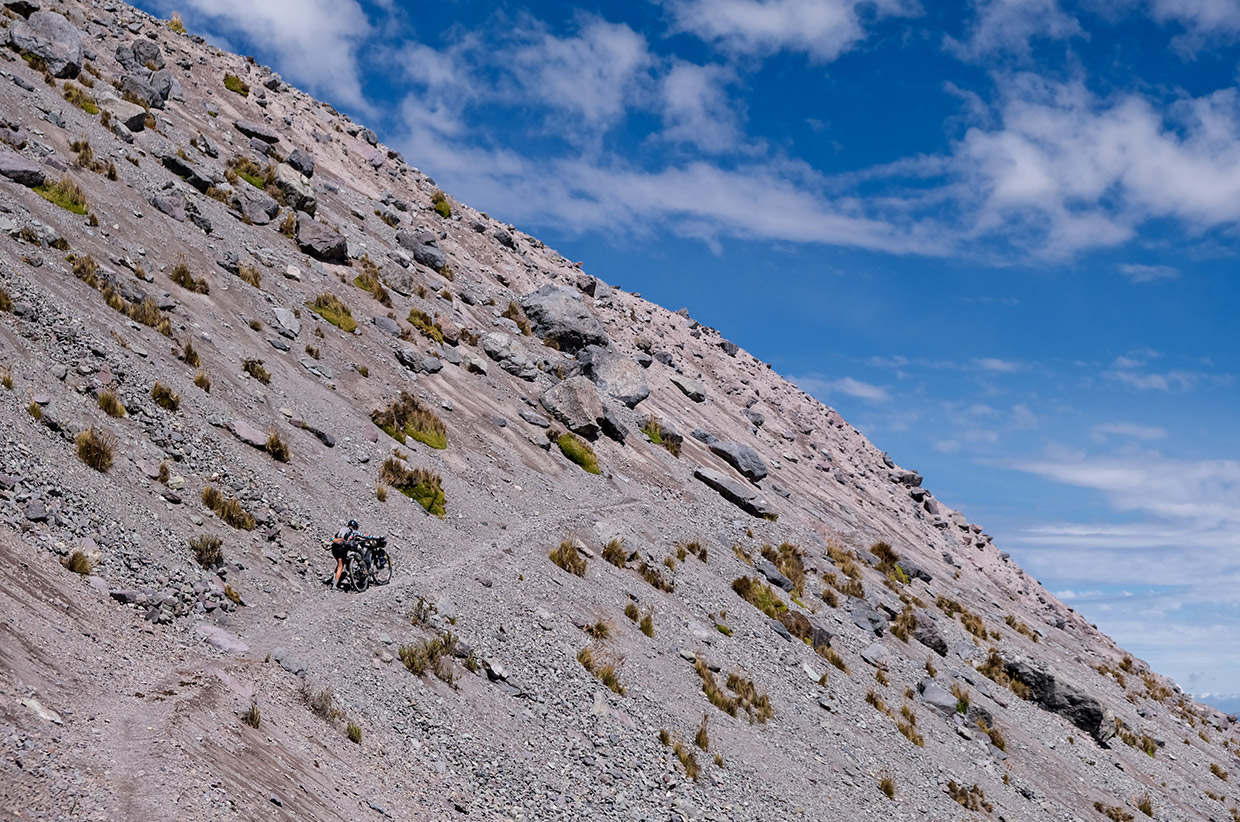
‘Here we go again,’ I said to Eloi with a resigned smile. We were each wearing every layer we possessed. The snow landed on us and melted, saturating everything. Once again we fought to pin our tent to the ground; once again the wind did everything it could to tear it away. Resigned to our fate, we hauled our things inside so they wouldn’t get any wetter. We just wanted to drink something hot to warm ourselves up. Also, because we were nearing the end of our planned ride, we had very little left to eat. I felt the hunger gnaw at me.
To complicate the situation, as soon as I sat down inside the tent, feeling the water streaming down my face while I was removing my wet gloves, my period decided that this was the right time to appear. I had a night of spasms and two days of misery to look forward to.
One little thing can throw off even the most flexible plan. It’s easy to replan and move forward, but when we never manage to stick to any plan the frustration starts to trigger negative thoughts. What if I’m not strong enough to do this? Why is the weather always against us? Why do I not have control of anything at all? But sometimes these thoughts go the other way. Let’s just fucking go. It doesn’t matter if it snows or rains or hails or if we’re tired and don’t have food.
During the first snowstorm, Eloi had the brilliant idea to keep going despite the storm and the lack of food or water; that time, I was the one trying to bring in a logical side. ‘No way. We don’t know if this is going to last 20 minutes or the whole afternoon, so we need to find a place to put the tent and keep dry, and quickly, otherwise the adventure is over.’ During the second snowstorm the situation repeated itself, but our reaction was more extreme: ‘What the fuck are we doing here? We should turn back.’ But then we put everything on the table to see it from another perspective. ‘OK, but we can just wait a bit, maybe even until tomorrow, we still can ration food. Let’s hope luck is on our side tomorrow.’
I’ve learned that when those extreme thoughts start, it’s time to just calm down, breathe, and realise that those impulses could lead to a bad outcome. Something in between is needed to keep going safely.
So, once again, we found ourselves sitting there shivering in our wet layers, contemplating the choice ahead. I couldn’t think much at all by that time. The uterine cramps, the hunger, the cold, and the frustration of the day didn’t let me see things clearly. ‘What do you want to do?’ Eloi kept asking. And all I could say was, ‘I don’t know.’ We were both battling between turning back and waiting.
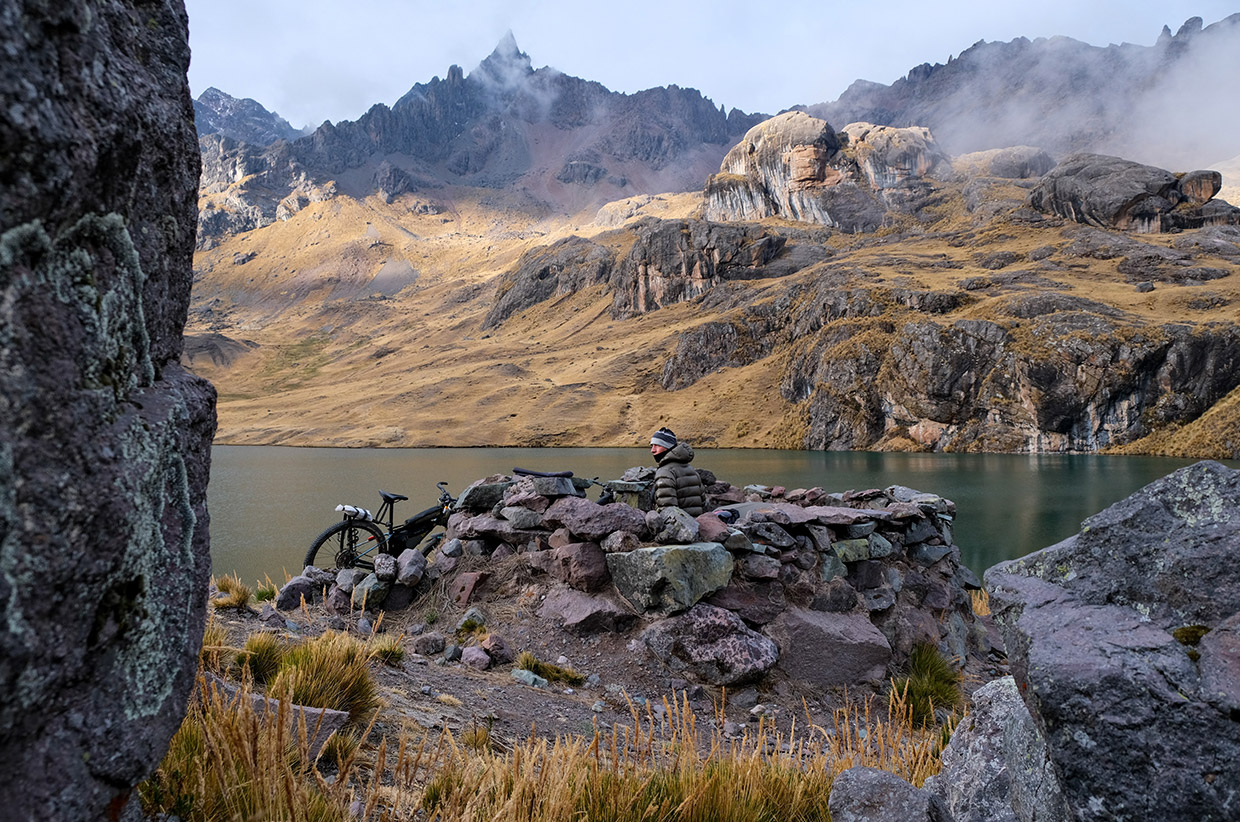
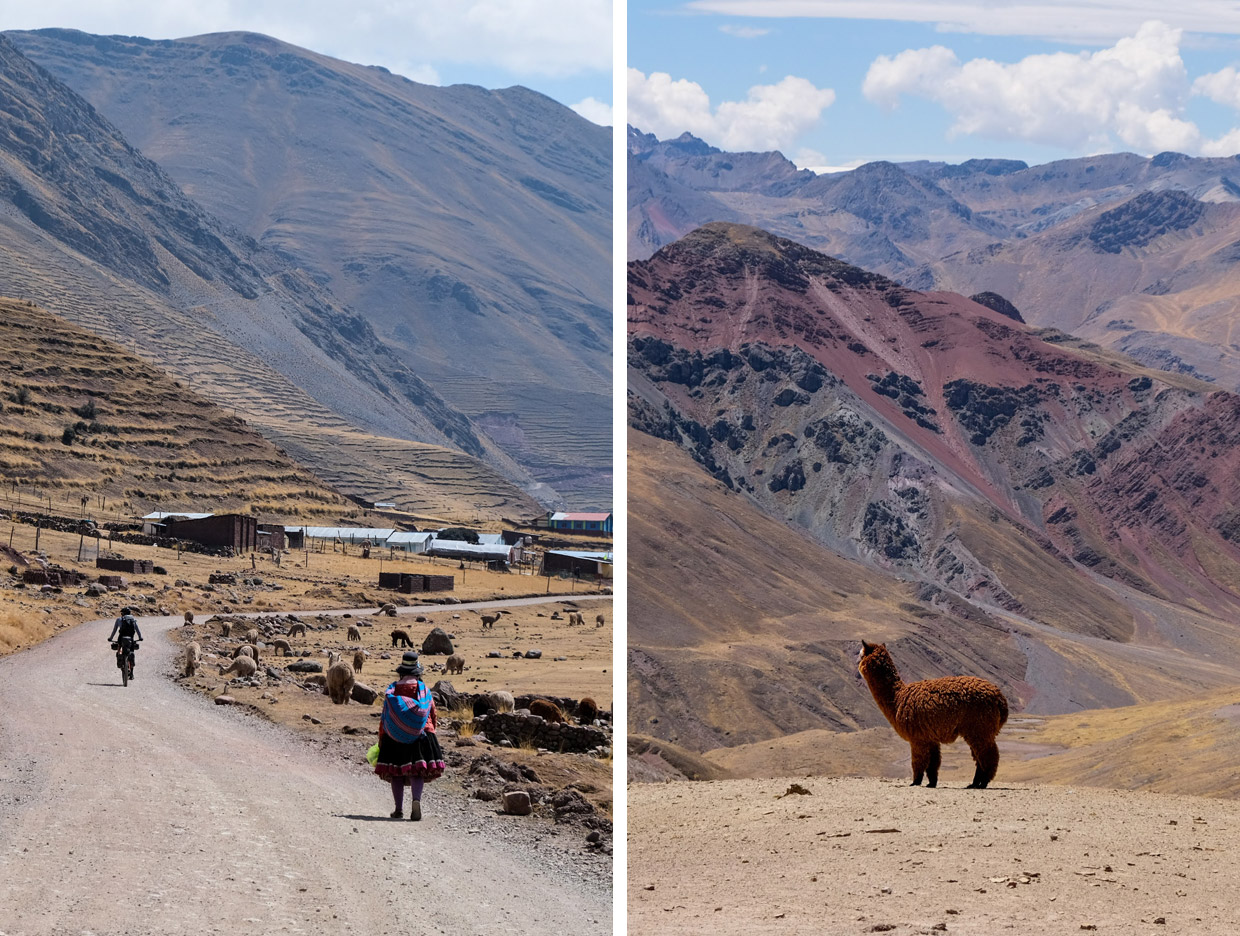
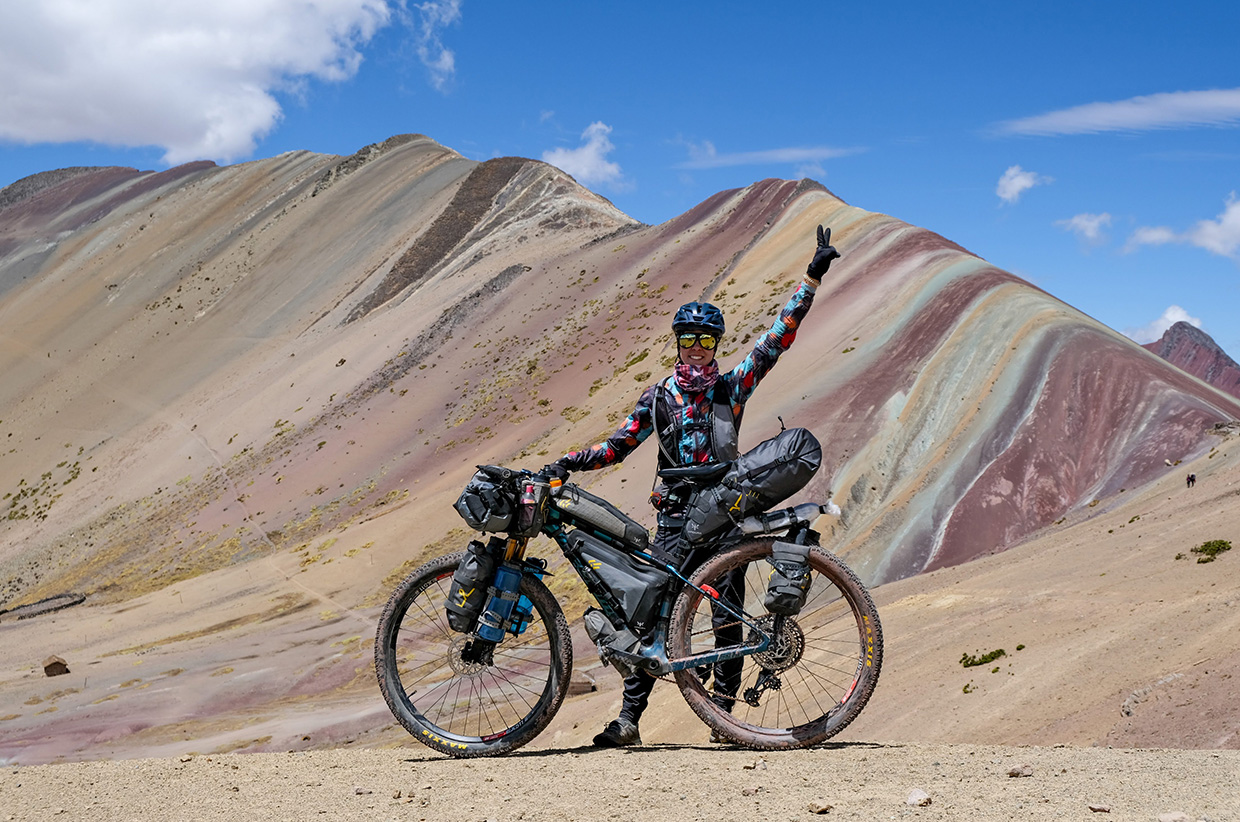
Both of us wanted to do this route. A bad decision could have ended it on the first day. A bad decision could mean pushing through when it was unsafe to do so or giving up on the route when we still had more to give. Depending on the moment, either of us could be on either side of that decision. But here, in this storm at altitude, with dwindling food supplies, we needed to make only smart choices.
So we talked it out. And, eventually, came to a consensus. ‘OK,’ Eloi said. ‘If we wake up with threatening clouds or snow, we will abandon the idea of going to the Rainbow Mountain.’ This route had already tested us in so many ways. Everything was intense, from the weather to the views to the fantastic riding – a unique experience compared to anything else we had done since leaving California.
***
In the morning, Eloi and I woke to the sun shining down out of a pristine blue sky. Winds were light. ‘Looks like it will stay calm for a while,’ Eloi said, head poking out through the tent’s door, and he sounded optimistic. Even though my strength wasn’t at its best and the spasms were extremely painful, our desire to reach the Rainbow Mountain had not faded.
We had a few metres of elevation left to reach the top of the Abra Warmisaya. A technical descent, more tricky with the snow, led us to the final climb. Beneath our wheels more and more red gravel began to show through the thinning snow pack, which was melting quickly in the sun. ‘We’re so close!’ I cried, and we both drew strength where there had been none such a short time before.
Finally, almost unbelievably, the Rainbow Mountain loomed in front of us: an improbable hulk of rock, striped and banded in many hues, like nothing we had ever seen. Our plan had worked! We hugged each other, glowing with the satisfaction of reaching our goal – a goal achieved only by making it through uncertainty, discomfort, and hard decisions – while contemplating a show of colours that only nature in its greatest splendour can offer.
First published in Sidetracked Magazine Volume 27
Written by Sònia Colomo Sala // Photography by Sònia Colomo Sala & Eloi Miquel Arcarons
@soniscs // @wheelprintstories // @eloimiquel // @apidura
